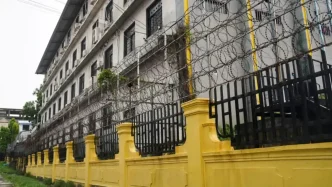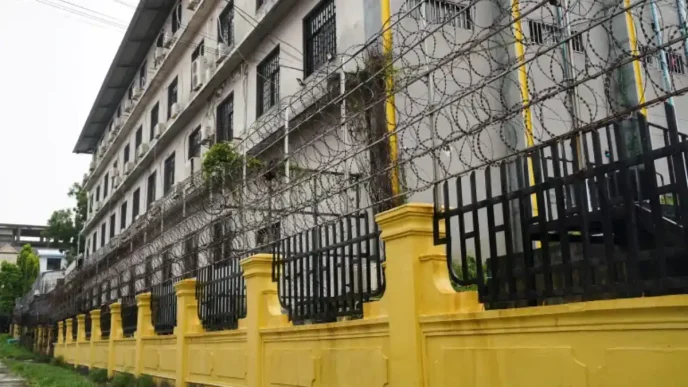In a significant step toward deepening bilateral relations, General Secretary of the Communist Party of Vietnam (CPV) Central Committee To Lam welcomed Japanese Prime Minister and President of the Liberal Democratic Party (LDP) Ishiba Shigeru in Hanoi on April 27, 2025. The meeting, part of Ishiba’s three-day official visit, underscored the growing importance of the Comprehensive Strategic Partnership between the two nations, marking a new chapter in their collaboration amid complex regional dynamics.
A Milestone in Bilateral Relations
The visit, coinciding with Vietnam’s preparations for the 50th anniversary of National Reunification on April 30, carried symbolic weight. General Secretary To Lam emphasized the historic nature of the engagement, noting that it paves the way for enhanced cooperation across multiple domains. Prime Minister Ishiba, returning to Vietnam for the first time as Japan’s government leader after 35 years, expressed his admiration for Vietnam’s national liberation efforts and the legacy of the late President Ho Chi Minh, the founding father of modern Vietnam.
The discussions highlighted the shared vision of both leaders to elevate their partnership, which was upgraded to a Comprehensive Strategic Partnership in recent years. This framework, built on decades of diplomatic ties, prioritizes mutual trust, economic collaboration, and regional stability. For Vietnam, Japan remains a cornerstone of its foreign policy, which is rooted in independence, self-reliance, and the diversification of international partnerships. To Lam reiterated Vietnam’s commitment to a peaceful and cooperative approach on the global stage, with Japan positioned as one of its most critical and long-standing allies.
Strategic Orientations for the Future
During the meeting, General Secretary To Lam proposed seven key orientations to strengthen strategic cooperation between Vietnam and Japan. These priorities reflect Vietnam’s broader developmental ambitions, including its two centennial goals—marking the 100th anniversary of the CPV’s establishment in 2030 and the country’s founding in 2045. Central to these goals is a renewed economic model focused on rapid, sustainable growth in what To Lam described as “the era of the nation’s rise.”
Among the proposed areas of collaboration, To Lam emphasized the importance of bolstering political trust and fostering practical security and defense ties. Economic cooperation, underpinned by science, technology, and high-quality human resources, was identified as a critical pillar. He urged Japan to play a leading role in Vietnam’s major infrastructure projects through new-generation Official Development Assistance (ODA) funding, a mechanism that has historically supported Vietnam’s modernization efforts.
Innovation emerged as a focal point, with To Lam advocating for science, technology, and digital transformation to become a new cornerstone of bilateral relations. Specific sectors such as semiconductors, green energy transitions, and high-tech agriculture were highlighted as areas of untapped potential. Additionally, he called for expanded labor cooperation, deeper cultural exchanges, and strengthened local-to-local partnerships to build stronger people-to-people connections between the two nations.
Japan’s Commitment to Vietnam’s Growth
Prime Minister Ishiba reciprocated with a strong affirmation of Vietnam’s significance to Japan, describing it as an “indispensable partner.” He congratulated Vietnam on its socio-economic achievements under To Lam’s leadership, particularly in administrative reforms and economic orientation toward science and technology. Ishiba also acknowledged Vietnam’s proactive role in navigating complex regional and international challenges, signaling Japan’s appreciation for Vietnam’s growing influence in Southeast Asia.
In response to Vietnam’s proposals, Ishiba pledged Japan’s continued support for Vietnam’s industrialization and modernization goals. He outlined plans to deepen cooperation in economics, investment, and ODA, alongside emerging fields like cybersecurity, digital transformation, and innovation. Security and defense collaboration, as well as cultural and people-to-people exchanges, were also prioritized. Notably, Ishiba committed to supporting the Vietnamese community in Japan—over 600,000 strong—by facilitating better conditions for those living, studying, and working there.
Both leaders agreed to enhance party-to-party cooperation between the CPV and the LDP, a move that could further institutionalize their strategic partnership. Ishiba’s assurances align with Japan’s broader foreign policy in the region, which seeks to balance economic engagement with security concerns amid rising geopolitical tensions in the Indo-Pacific.
Regional and Global Coordination
Beyond bilateral ties, the Hanoi meeting addressed the importance of coordination at regional and international forums. With global volatility on the rise, To Lam and Ishiba agreed to work closely within frameworks such as the Association of Southeast Asian Nations (ASEAN) and the United Nations. Their shared commitment to peace, stability, and development in the region reflects a mutual understanding of the challenges posed by competing interests in the South China Sea and beyond, though specific disputes were not publicly detailed during the discussions.
This alignment is particularly significant for Vietnam, which has sought to balance its relationships with major powers while maintaining an independent foreign policy. Japan’s role as a key partner in ASEAN-related initiatives offers Vietnam additional diplomatic leverage, especially as it navigates its position within the region’s economic and security architecture. For Japan, closer ties with Vietnam reinforce its strategic presence in Southeast Asia, a critical component of its Indo-Pacific strategy.
Cultural and Diplomatic Exchanges
The meeting also featured gestures of mutual respect and forward-looking engagement. To Lam extended an invitation to the Emperor and Empress of Japan to visit Vietnam at an early date, a move that would further cement cultural ties. In return, Ishiba invited the Vietnamese General Secretary to visit Japan, signaling a reciprocal commitment to high-level exchanges. Additionally, Ishiba confirmed Japan’s participation in the World Police Music Festival organized by Vietnam’s Ministry of Public Security, while To Lam congratulated Japan on hosting the Osaka Kansai EXPO 2025, an event expected to showcase global innovation.
These cultural and diplomatic initiatives underscore the multifaceted nature of Vietnam-Japan relations, which extend beyond politics and economics to encompass shared values and historical connections. The timing of Ishiba’s visit, aligning with Vietnam’s National Reunification celebrations, further amplified its symbolic resonance, reinforcing the narrative of unity and progress that both leaders sought to project.
Economic Implications and Opportunities
The emphasis on economic cooperation during the talks holds significant implications for Vietnam’s development trajectory. Japan has long been a major investor in Vietnam, with Japanese firms playing a pivotal role in sectors such as manufacturing, technology, and infrastructure. The focus on new-generation ODA funding and high-tech collaboration could accelerate Vietnam’s transition to a knowledge-based economy, aligning with its centennial goals of sustainable growth.
Digital transformation and innovation, identified as emerging pillars of cooperation, are particularly relevant given Vietnam’s push to become a regional hub for technology and semiconductors. Japanese expertise in these fields could provide a critical boost, while Vietnam’s young, skilled workforce offers an attractive labor pool for Japanese companies. The mention of green transition and energy cooperation also reflects a shared recognition of climate challenges, with potential for joint projects in renewable energy and sustainable agriculture.
However, challenges remain in translating these commitments into tangible outcomes. Infrastructure projects, while promising, often face delays due to bureaucratic hurdles and funding constraints. Additionally, labor cooperation must address issues such as cultural integration and worker protections to ensure mutual benefits for both nations. If navigated effectively, these areas of collaboration could serve as a model for other strategic partnerships in the region.
Looking Ahead: A Partnership in Transformation
As Vietnam and Japan chart the next phase of their Comprehensive Strategic Partnership, the outcomes of this visit signal a deepening alignment of interests. The shared focus on innovation, security, and regional stability positions both nations to address emerging challenges while capitalizing on new opportunities. Yet, the success of these initiatives will depend on sustained political will and the ability to adapt to evolving geopolitical realities.
For Vietnam, the partnership with Japan offers a pathway to achieve its ambitious development goals, reinforcing its role as a rising power in Southeast Asia. For Japan, closer ties with Vietnam strengthen its strategic footprint in the region, balancing economic engagement with broader security objectives. As both nations navigate an increasingly complex global landscape, the question remains: how will this renewed partnership shape the future of the Indo-Pacific?














